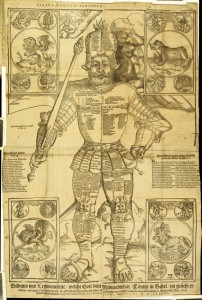I was invited to give a keynote at 'The Shape of Things: New and emerging technology-enabled models of participation through VGC' at the School of Museum Studies, University of Leicester. This was the first event for the AHRC-funded iSay: Visitor-Generated Content in Heritage Institutions project.
I wrote up my research for this lecture into an article for Curator Journal, From Tagging to Theorizing: Deepening Engagement with Cultural Heritage through Crowdsourcing. If you have don't have access to the journal through your library, the pre-print is available from the Open University repository here.
My slides are below and I've blogged Notes from 'The Shape of Things: New and emerging technology-enabled models of participation through VGC'. I've also saved an archive of isayevent_tweets_2013_02_01 (CSV).
If you found this post useful, you might be interested in my book, Crowdsourcing Our Cultural Heritage.
